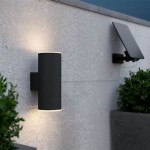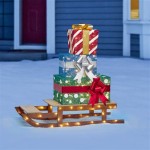How to Install an Outdoor Junction Box
An outdoor junction box is an essential electrical component for connecting and protecting wires and cables in outdoor environments. It provides a safe and weatherproof enclosure for electrical connections, ensuring the proper functioning and longevity of your outdoor lighting, appliances, and circuitry. Here's a comprehensive guide to help you install an outdoor junction box correctly: ### 1. Choosing the Right Location and Box Type *Location:
Determine the most suitable location for the junction box. It should be accessible for maintenance and protected from physical damage and moisture. Choose a location that meets electrical code requirements and provides adequate space for wire connections. *Box Type:
Select the appropriate type of outdoor junction box based on the number of wire connections required. Common box types include 4-inch by 4-inch single-gang boxes, 4-inch by 8-inch double-gang boxes, and larger boxes for more extensive connections. ### 2. Preparing the Area and Wiring *Cut the Power:
Before starting any electrical work, turn off the power at the circuit breaker or fuse box. *Mark and Cut the Hole:
Using a hole saw or a utility knife, cut a hole in the siding or wall where you want to install the junction box. Make sure the hole is large enough to fit the junction box and its cover plate. *Feed the Wires:
Thread the electrical wires through the hole into the junction box. Allow for sufficient wire length for making connections and future service. ### 3. Installing the Junction Box *Mount the Box:
Place the junction box inside the hole and secure it using screws or nails. Ensure that the box is level and securely fastened. *Connect the Wires:
Inside the junction box, strip the ends of the wires (about 1/2 to 3/4 inches) and twist the bare wires of the same color together. Use wire connectors or crimp connectors to secure the connections. *Insulate the Connections:
Apply electrical tape over the wire connectors to insulate the connections and prevent shorts. ### 4. Sealing and Protecting the Box *Caulk Around the Hole:
Use silicone caulk to seal the gap between the junction box and the surrounding area. This helps prevent water and moisture from entering the box. *Install the Cover Plate:
Screw the cover plate onto the junction box to protect the connections and provide a finished appearance. *Restore Power:
Once all the installations are complete, turn the power back on at the circuit breaker or fuse box. ### 5. Tips for Successful Installation * Use weatherproof junction boxes and wire connectors to ensure durability and protection against the elements. * Consider installing a GFCI (ground fault circuit interrupter) receptacle in the junction box for added safety in wet or damp locations. * If you are not comfortable working with electrical wiring, consult a licensed electrician for professional installation. * Regularly inspect your outdoor junction boxes for any damage or loose connections to ensure safe operation.How Do I Install Outdoor Junction Box Diy Home Improvement Forum

How To Install An Exterior Electrical Box For A Light Fixture On The Wood Siding

Add An Exterior On A Brick House Homediygeek

How To Install An Outdoor Electrical Remodel
How To Seal An Outdoor Electrical Box Quora
Should An Electrical Junction Box For Outdoor Fixture Be Flush With The Siding Or Plywood Sheathing Underneath Quora

Buried Junction Boxes Doityourself Com Community Forums

Add An Exterior On A Brick House Homediygeek

How To Add An Outdoor Electrical Diy

How To Install Outdoor Lighting Junction Box Aka Wire Mount A Landscape Transformer
Related Posts







